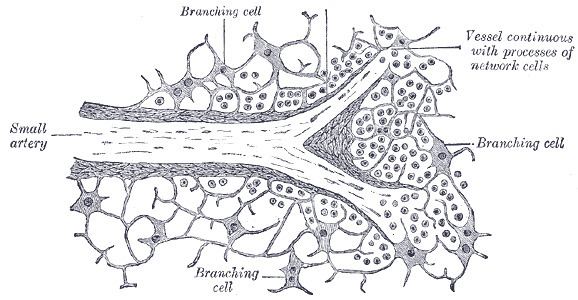Drains from sinus | ||
 | ||
The trabecular veins are the largest veins inside the spleen. It drains the blood collected in the sinuses of the pulp.
Details
The blood is collected from the interstices of the tissue by the rootlets of the veins, which begin much in the same way as the arteries end.
The connective-tissue corpuscles of the pulp arrange themselves in rows, in such a way as to form an elongated space or sinus.
They become elongated and spindle-shaped, and overlap each other at their extremities, and thus form a sort of endothelial lining of the path or sinus, which is the radicle of a vein.
On the outer surfaces of these cells are seen delicate transverse lines or markings, which are due to minute elastic fibrillæ arranged in a circular manner around the sinus.
Thus the channel obtains an external investment, and gradually becomes converted into a small vein, which after a short course acquires a coat of ordinary connective tissue, lined by a layer of flattened epithelial cells which are continuous with the supporting cells of the pulp.
The smaller veins unite to form larger ones; these do not accompany the arteries, but soon enter the trabecular sheaths of the capsule, and by their junction form six or more branches, which emerge from the hilum, and, uniting, constitute the lienal vein, the largest radicle of the portal vein.
